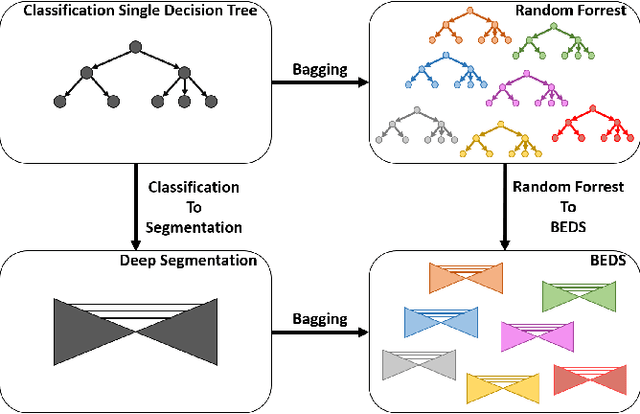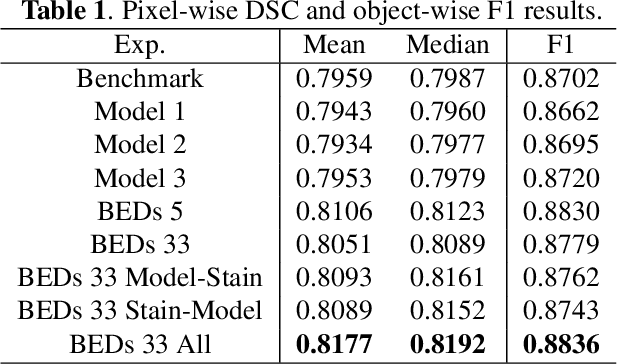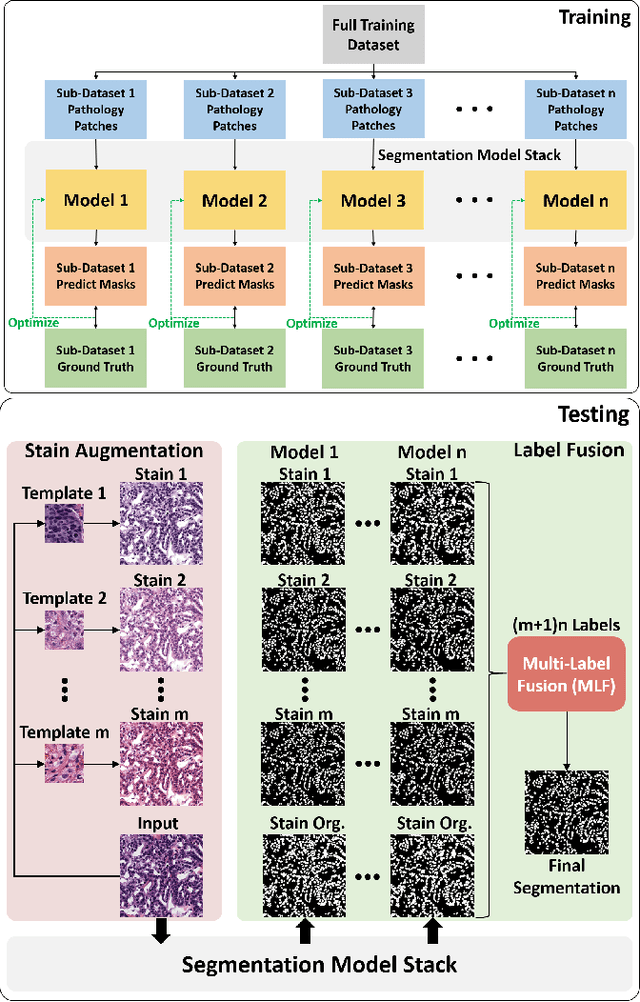Jiaxin He
Step-Video-TI2V Technical Report: A State-of-the-Art Text-Driven Image-to-Video Generation Model
Mar 14, 2025Abstract:We present Step-Video-TI2V, a state-of-the-art text-driven image-to-video generation model with 30B parameters, capable of generating videos up to 102 frames based on both text and image inputs. We build Step-Video-TI2V-Eval as a new benchmark for the text-driven image-to-video task and compare Step-Video-TI2V with open-source and commercial TI2V engines using this dataset. Experimental results demonstrate the state-of-the-art performance of Step-Video-TI2V in the image-to-video generation task. Both Step-Video-TI2V and Step-Video-TI2V-Eval are available at https://github.com/stepfun-ai/Step-Video-TI2V.
BEDS: Bagging ensemble deep segmentation for nucleus segmentation with testing stage stain augmentation
Feb 17, 2021



Abstract:Reducing outcome variance is an essential task in deep learning based medical image analysis. Bootstrap aggregating, also known as bagging, is a canonical ensemble algorithm for aggregating weak learners to become a strong learner. Random forest is one of the most powerful machine learning algorithms before deep learning era, whose superior performance is driven by fitting bagged decision trees (weak learners). Inspired by the random forest technique, we propose a simple bagging ensemble deep segmentation (BEDs) method to train multiple U-Nets with partial training data to segment dense nuclei on pathological images. The contributions of this study are three-fold: (1) developing a self-ensemble learning framework for nucleus segmentation; (2) aggregating testing stage augmentation with self-ensemble learning; and (3) elucidating the idea that self-ensemble and testing stage stain augmentation are complementary strategies for a superior segmentation performance. Implementation Detail: https://github.com/xingli1102/BEDs.
 Add to Chrome
Add to Chrome Add to Firefox
Add to Firefox Add to Edge
Add to Edge